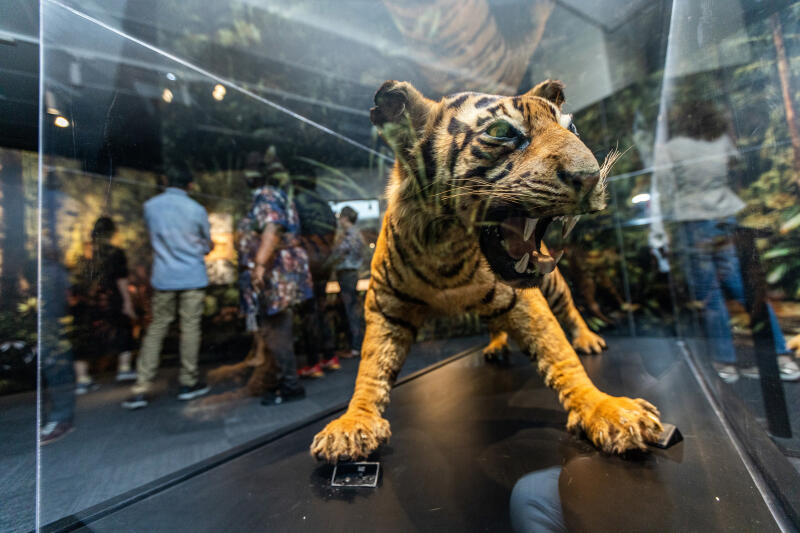askST@NLB: Let kids learn about nature to spark interest
Sign up now: Get ST's newsletters delivered to your inbox

NLB's HumanxNature exhibition on Singapore's biodiversity heritage.
PHOTO: NATIONAL LIBRARY BOARD
Gabrielle Ng
Follow topic:
SINGAPORE - Exposing children to as much nature as possible from a young age can help interest them in climate change, said National Library Board (NLB) Exhibitions Co-Curator Georgina Wong at an askST @ NLB discussion on Friday (June 25).
Hosted by The Straits Times Science and Environment Correspondent Audrey Tan, the discussion - When Nature Speaks - was done virtually on Zoom and broadcast on ST's Facebook page.
Ms Wong said allowing children to learn about Singapore's natural history firsthand can help them grow an appreciation for the natural environment, and NLB's HumanxNature exhibition on Singapore's biodiversity heritage is one such avenue for parents to do so.
Open till Sept 26, HumanxNature explores Singapore's relationships with the natural world from cultural understanding and scientific study to commercial and urban land use, as well as conservation and restoration.
The exhibition features an array of natural history books, botanical prints, plantation photographs and maps from the collections of the National Library and National Archives, together with herbarium and natural history specimens on loan from the Lee Kong Chian Natural History Museum, Singapore Botanic Gardens and Urban Redevelopment Authority.
A guide specially curated for children is provided to help them understand and engage with the exhibits.
While understanding the history of Singapore's natural environment can help Singapore tackle climate change, Ms Tan added that efforts to tailor future climate projection models, such as one dubbed a 'crystal ball' being developed by scientists at the Centre for Climate Research Singapore, may be key to a clearer understanding of how climate change will impact Singapore.
Another measure of climate change is contained in Singapore's natural environment itself, she said, noting that a study by the Nanyang Technological University (NTU) published in June found mangrove pollen 20m below Singapore's current sea level, indicating that local sea levels had risen. Separately, in 2016, coral reefs in local seas turned white due to the exit of microalgae, which live in them and are their source of food, under stress from rising sea temperatures.
In the question and answer segment, Ms Tan said that one of the most pressing issues facing Singapore is rising sea levels.
Citing Prime Minister Lee Hsien Loong's 2019 National Day Rally speech where he said climate change was one of the gravest challenges facing humankind, Ms Tan said: "Other countries can allow their coastlines to recede, but Singapore is too small to do that. We need to examine Singapore's past to determine the reasons behind its sea level rise."
AskST @ NLB is a collaboration between The Straits Times and the National Library Board.
Those who missed the Facebook broadcast can find the video at this website. Past askST @ NLB sessions can be found there as well.
Those who wish to know more about climate change can check out the resources from ProQuest Central, a database subscribed by NLB, using the keywords: "Climatic changes", "Global warming", and "Climate change mitigation".
If you do not have a myLibraryID, you can go to the NLB website and sign up for one using your SingPass or NRIC/FIN.
Suggested titles for reading:
How to avoid a climate disaster: The solutions we have and the breakthroughs we need
Planning Singapore: The experimental city
Standing up for a sustainable world: Voices of change
How to avoid a climate disaster: The solutions we have and the breakthroughs we need
Planning Singapore: The experimental city
Standing up for a sustainable world: Voices of change

